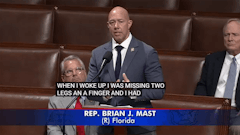
The Montana Secretary of State has certified an adult-use cannabis legalization measure for the state’s November ballot, verifying that New Approach Montana’s two complementary initiatives have gathered enough signatures to appear before voters this year, according to a Great Falls Tribune report.
Statutory Initiative 190 would establish a system to regulate and tax cannabis for adult use, and Constitutional Initiative 118 would authorize the state to set the legal age for consumption at 21.
New Approach Montana gathered more than 50,000 signatures for the statutory initiative and more than 80,000 signatures for the constitutional initiative, and submitted the signatures for certification in June, Great Falls Tribune reported.
RELATED: Montana Legalization Campaign Looks Ahead to November Ballot Issue
The Governor’s Office of Budget and Program Planning has estimated that, if passed, the measure could generate $3.5 million in tax revenue in fiscal year 2022, with the market growing to $38.5 million in 2025, according to the news outlet.
























